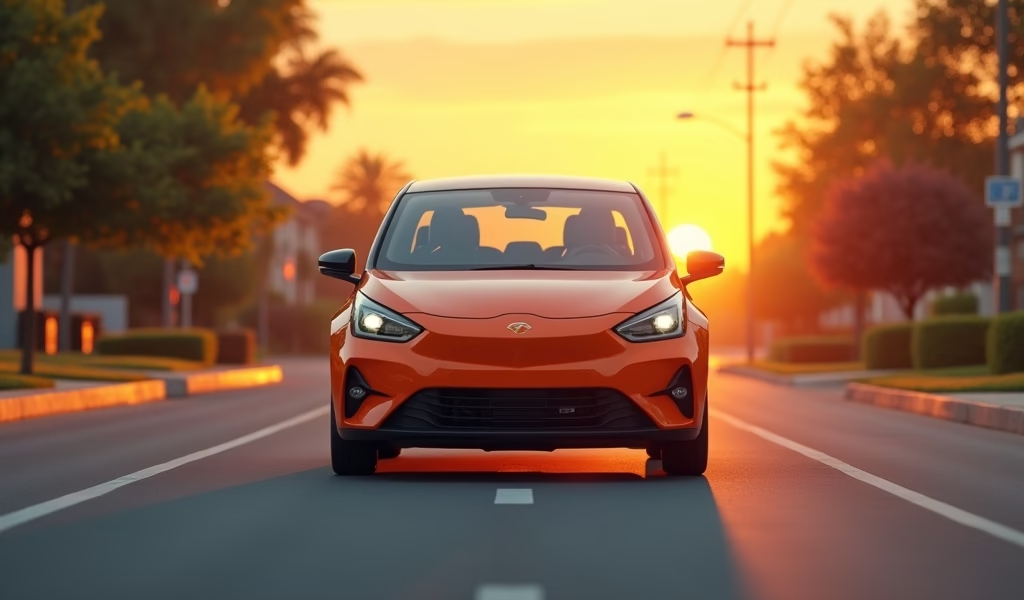Overview
This article examines car insurance options for young drivers, highlighting GEICO, State Farm, and Progressive as top providers that balance affordability with adequate coverage. It offers money-saving strategies like maintaining good grades, taking defensive driving courses, using telematics programs, staying on parents’ policies, and choosing insurance-friendly vehicles, while emphasizing the importance of not skimping on essential coverages despite budget constraints.
Table of Contents
- What Drives Insurance Costs for Young Drivers
- Top Insurance Providers for Younger Drivers
- GEICO: The Online Savings Specialist
- State Farm: Reliable Support for Students
- Progressive: Flexible Options for Tight Budgets
- Money-Saving Strategies for Young Drivers
- Essential Coverage Young Drivers Shouldn’t Skip
- Real-World Experiences from Young Drivers
- Conclusion
- Frequently Asked Questions
Getting your driver’s license is an exciting milestone, but the insurance costs that come with it can quickly put the brakes on your excitement. As a mechanic who’s worked with countless young drivers over the years, I’ve seen firsthand how those high premiums can force folks to cut corners on vehicle maintenance. The good news? You have options that won’t require emptying your savings account.
Young drivers typically pay two to three times more for insurance than older drivers – not because insurance companies have it out for you, but because statistically, newer drivers have more accidents. It makes sense when you think about it from a technical perspective: driving is a skill that improves with practice, just like diagnosing engine problems.
In this guide, I’ll walk you through the best insurance companies for young drivers that offer reasonable rates without skimping on the coverage you need. I’ll also share some insider tips I’ve picked up from working with hundreds of young car owners over the years.
What Drives Insurance Costs for Young Drivers
Before we pop the hood on specific companies, let’s understand what factors influence your insurance rates. It works a lot like diagnosing car problems – you need to know what’s causing the issue before you can fix it.
Age and experience sit at the top of the list. Insurance companies see drivers under 25 (especially teenagers) as high-risk customers because accident statistics back this up. According to the CDC, teen drivers are nearly three times more likely to be in a fatal crash than drivers aged 20 and older.
Your vehicle choice significantly impacts your rates. That sporty coupe might look great in your driveway, but insurance companies see expensive repair costs and higher accident rates. From my experience in the shop, I can tell you that parts for performance vehicles often cost 2-3 times more than comparable components for economy cars.
Your driving record works like your vehicle’s service history – a clean record shows you’re maintaining things properly. Even one ticket can raise already-high rates by 20-30% for young drivers.
Location matters too. Urban areas with higher traffic density and theft rates typically come with steeper premiums. Rural drivers generally enjoy lower rates but may face other challenges like limited repair facilities.

Top Insurance Providers for Younger Drivers
After reviewing policies and talking with countless young drivers who roll into my shop, I’ve identified several insurers that consistently deliver good value for newer drivers. Think of these recommendations like suggesting the right oil for your engine – they might not be perfect for every situation, but they’re a solid starting point.
GEICO: The Online Savings Specialist
GEICO has built a reputation on helping drivers save money, which is particularly attractive when you’re starting out. Their digital-first approach means everything happens through their sleek mobile app or website – perfect for tech-savvy young drivers.
In my experience, GEICO typically offers rates 10-15% below competitors for young drivers, with annual premiums often ranging from $1,500-$2,200. That’s still not cheap, but it’s like finding a quality rebuilt alternator instead of paying for a brand new one – significant savings without compromising function.
They offer several programs specifically beneficial for young drivers:
- Good student discounts (up to 15% for B average or better)
- Defensive driving course discounts
- DriveEasy program that monitors driving habits and rewards safe behavior
The drawback? GEICO’s customer service operates primarily through digital channels, which can be frustrating when you have complex questions. Much like diagnosing electrical problems, sometimes you just need to talk things through with an expert.
State Farm: Reliable Support for Students
As the nation’s largest auto insurer, State Farm combines financial stability with personalized service through their extensive agent network. For first-time insurance buyers, having someone explain coverages face-to-face can be as valuable as having a mechanic walk you through your first oil change.
State Farm particularly shines for students, offering one of the most generous good student discounts in the industry – up to 25% off for qualifying grades. Their Steer Clear program, designed specifically for drivers under 25, can save you up to 15% more by completing their safe driving program.
Young drivers typically see annual premiums between $1,700-$2,500 with State Farm, though rates vary significantly based on location. In rural areas, I’ve seen State Farm consistently offer better rates than most competitors for younger drivers.
The personalized service does come at a cost – State Farm isn’t usually the absolute cheapest option. But like choosing OEM parts over aftermarket, sometimes paying a bit more upfront saves headaches down the road.
Progressive: Flexible Options for Tight Budgets
Progressive stands out with their customization options and innovative tools. Their Name Your Price tool helps young drivers find policies that fit specific budget constraints – similar to how I help customers prioritize repairs when they can’t afford to fix everything at once.
Their Snapshot program is one of the industry’s best usage-based insurance options. It monitors your driving through a mobile app or plug-in device and can offer significant savings for those who drive safely. I’ve had customers report savings of 10-30% after completing the monitoring period.
Young drivers can expect to pay approximately $1,800-$2,700 annually with Progressive, but their abundant discounts can substantially reduce this figure. They also offer:
- Teen driver discounts
- Good student discounts
- Multi-policy bundling options
From talking with customers, Progressive seems to be more forgiving of minor incidents than some other insurers, which can be a significant advantage for newer drivers who might make small mistakes while learning.

Money-Saving Strategies for Young Drivers
Even with higher base rates, young drivers can slash their premiums significantly by applying the right tactics. Think of these strategies like regular maintenance – small investments that prevent bigger expenses down the road.
Maintaining good grades pays off beyond your education. Most insurers offer good student discounts ranging from 10-25% for keeping a B average (typically 3.0 GPA). I’ve seen this single discount save young drivers hundreds of dollars annually.
Consider taking a defensive driving course. These typically cost less than $100, can often be completed online, and may reduce your premium by 5-15%. Plus, the skills you learn might help you avoid accidents that could damage your vehicle and driving record.
Telematics or usage-based insurance programs like Progressive’s Snapshot, State Farm’s Drive Safe & Save, or Allstate’s Drivewise can be game-changers for careful young drivers. These programs monitor driving habits through your smartphone or a device installed in your vehicle, potentially saving safe drivers up to 30%.
Staying on your parents’ policy when possible typically results in significant savings compared to getting your own coverage. This arrangement works best when you still live at home or are away at college. It’s like sharing tools in a workshop – more economical than everyone buying their own set.
Choose your vehicle wisely. As a mechanic, I always advise young drivers to research insurance costs before purchasing a vehicle. That affordable used sports car might seem like a bargain until insurance quotes come in at double what you’d pay for a sensible sedan.
Essential Coverage Young Drivers Shouldn’t Skip
While budget concerns are real, skimping on certain coverages can lead to financial disaster after an accident. It’s like avoiding oil changes to save money – the short-term savings aren’t worth the long-term consequences.
State minimum liability requirements rarely provide adequate protection. For example, California’s minimum bodily injury liability of $15,000 per person would barely cover a moderate hospital stay after an accident you cause.
Young drivers should aim for liability coverage of at least 100/300/50 ($100,000 bodily injury per person, $300,000 per accident, $50,000 property damage). This might increase your premium by $200-300 annually compared to minimum coverage, but provides crucial protection for your financial future.
Collision and comprehensive coverage protect your vehicle against accidents and non-collision incidents like theft, vandalism, or weather damage. If your car is worth more than a few thousand dollars, these coverages are typically worth the investment despite adding $500-1,000 to your annual premium.
Don’t overlook uninsured/underinsured motorist coverage. According to the Insurance Information Institute, about 1 in 8 drivers on American roads is uninsured. This affordable coverage protects you when someone without adequate insurance hits you.
For young drivers with older vehicles or those who frequently travel long distances, roadside assistance can be invaluable. It typically costs just a few dollars per month and can save you from being stranded with a breakdown. As a mechanic who’s seen the outrageous charges from emergency towing services, I consider this small investment well worth it.
Real-World Experiences from Young Drivers
Beyond the numbers, hearing from other young drivers about their experiences can help you make informed decisions. Here are some insights from drivers who’ve shared their insurance journeys with me while getting their vehicles serviced:
Marcus, a 22-year-old college student with one speeding ticket, found GEICO offered rates nearly $600 cheaper than competitors. “Their app makes everything super simple, from paying bills to filing claims. When I had a minor fender bender last winter, I submitted everything through the app and had an estimate within 24 hours.”
Emma, a 19-year-old with a perfect driving record, chose State Farm based on her family’s recommendation. “My State Farm agent explained everything in terms I could understand. Their good student discount saved me about 20%, and when I completed their Steer Clear program, my rate dropped another 15%.”
Tyler, a 20-year-old delivery driver, selected Progressive for their flexibility. “I drive a lot for work, so traditional insurance was super expensive. Progressive’s Snapshot program recognized that I’m actually a safe driver despite my age, and my rate dropped by almost 25% after the monitoring period.”
Jordan, whose family has military connections, found USAA offered unbeatable rates. “They were nearly 40% cheaper than other quotes I received. When someone backed into my car in a parking lot, their claims process was incredibly smooth and they didn’t raise my rates since it wasn’t my fault.”
These real experiences highlight an important point: the best insurance company isn’t necessarily the cheapest—it’s the one that provides the right balance of affordability, coverage, and customer service for your specific situation.
Conclusion
Finding affordable insurance as a young driver is challenging, but not impossible. GEICO and Progressive typically offer the most competitive base rates, while State Farm provides exceptional value for students with good grades. Remember that the cheapest policy isn’t always the best choice – adequate coverage protects both your vehicle and financial future.
Take time to gather multiple quotes, understand your coverage needs, and leverage every discount opportunity available. Using telematics programs, maintaining good grades, and choosing the right vehicle can dramatically reduce your premiums.
As a mechanic who’s seen too many young drivers face financial hardship after accidents with inadequate insurance, I urge you to prioritize proper coverage even if it means paying slightly more. Just like preventative maintenance saves you money on repairs, good insurance prevents financial disasters.
The road to affordable coverage might have a few bumps, but with the right approach, you can secure reliable protection without draining your bank account. And if you’re still unsure about your options, consider speaking with an independent insurance agent who can help compare multiple policies from different providers to find your best match.
Remember that insurance for new drivers becomes more affordable over time. Maintain a clean driving record, build good credit, and reassess your options every six to twelve months. Before you know it, you’ll be enjoying both the freedom of the open road and the peace of mind that comes with proper protection.
Frequently Asked Questions
When do insurance rates typically decrease for young drivers?
Most drivers see their first significant rate decrease around age 25, assuming they maintain a clean driving record. Smaller decreases may begin after age 21 if you have a spotless driving history.
Is it cheaper to stay on my parents’ insurance policy?
Yes, remaining on your parents’ policy is typically much less expensive than getting your own coverage. This works best when you live with them or are temporarily away at college.
How much can a good student discount save me?
Good student discounts typically range from 10-25% depending on the insurer. This could translate to savings of $200-500 annually for many young drivers.
Are usage-based insurance programs worth it?
Yes, for safe drivers, telematics programs can reduce premiums by 10-30%. These programs reward actual driving behavior rather than relying solely on age-based statistics.
What’s the minimum coverage I should carry as a young driver?
Young drivers should aim for liability coverage of at least 100/300/50 rather than state minimums. Adding collision, comprehensive, and uninsured motorist coverage provides essential protection despite the higher cost.

